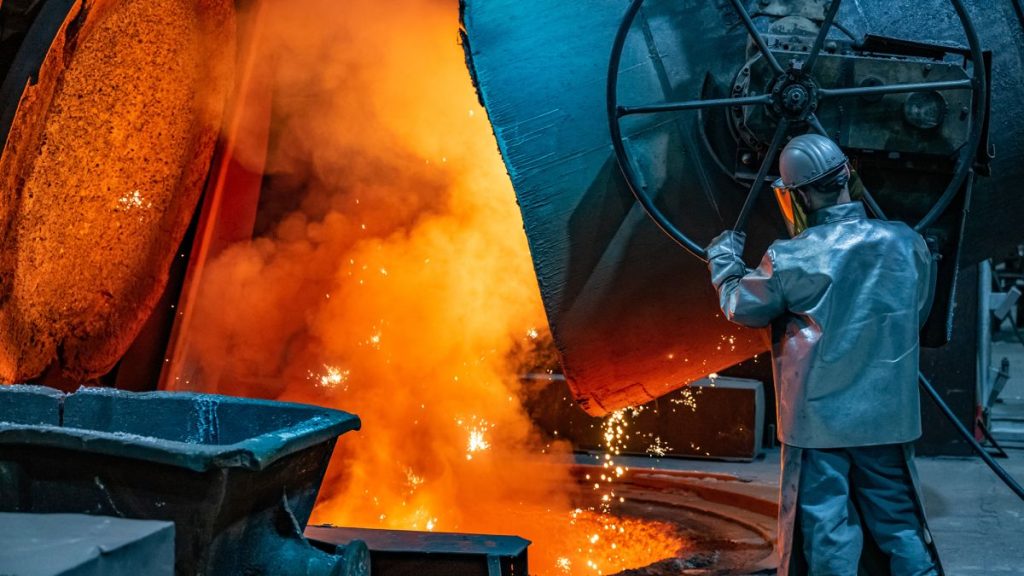Soaring costs and shortages push German industry to the brink

“There has never been anything like this before,” Georg Geier, the company’s managing director, told CNN Business. The major difference between past and present? Customer demand is high, but Siempelkamp either can’t find, or can’t afford, the supplies of the iron, nickel and energy it needs.It is a similar story at many of Germany’s manufacturing businesses, which contribute almost a fifth of its GDP, according to the World Bank. Industry behemoths like Volkswagen (VLKAF) and Siemens (GCTAF) are grappling with supply chain bottlenecks too, but it is Germany’s roughly 200,000 small and medium-sized manufacturers who are less able to withstand the shock. These companies are a vital part of the “Mittelstand,” the 2.6 million small- and medium-sized enterprises that account for more than half of German economic output and nearly two-thirds of the country’s jobs. Many are family-owned and deeply integrated into rural communities. The Siempelkamp foundry burns enough energy each year to power a town of 20,000 people. For years, the company paid between €40 ($43) and €50 ($53) per megawatt hour of electricity. But its bills shot up around September and “exploded” to all-time highs after Russia invaded Ukraine, Geier said. Average prices in March were around €250 ($267) per megawatt hour. “We’re made aware [of our energy costs] nearly each and every day,” Geier said. “When we get up until we get out.”
The war has stoked global inflation, which had begun to accelerate last year as economies reopened from pandemic lockdowns, causing a surge in demand for energy and goods. Now, Western sanctions on Russia’s coal and oil exports — and efforts by the European Union to slash consumption of its natural gas — have pushed prices up again. Sanctions on Russia, a major metals exporter, have further scrambled supply chains. Europe’s biggest economy is particularly vulnerable. According to the International Energy Agency, Germany relied on Russia for about 46% of its natural gas consumption in 2020. That number is likely to have fallen since the war started, but any sudden interruption in imports from Russia would be “catastrophic” for manufacturers like Siempelkamp, Geier said.Spiraling pricesSo far, Siempelkamp has not cut production, but is passing on eye-watering cost increases to its customers, such as the copper and cement producers that use its grinding mills, and electric car makers that use its machines. In turn, it expects its clients to pass costs to consumers. Germany’s annual producer price inflation — that’s the price of goods leaving factories — topped 30% in March, the highest level in 73 years. Prices at the factory gate are feeding into consumer price inflation, which hit a 41-year high of 7.3% last month. In both cases, surging energy prices were the biggest contributor. There was no relief in April, with consumer prices rising by 7.4% over the same month last year, according to a preliminary estimate.In Berlin, an ice cream maker is also feeling the strain. Florida Eis is partly insulated from high prices — it has switched much of the energy it uses for production and delivery to renewable sources — but its suppliers are not. The company now is paying between 30% and 40% more for its milk. Its owner Olaf Höhn shudders at the thought of the loss of Russian gas.”The sugar industry needs an enormous amount of energy. If they do not have gas any more, there would not be raw sugar any more,” Höhn said. “We cannot buy raw sugar on the world market due to EU regulations.” “We would have tremendous cutbacks up to a complete standstill,” he added. Manufacturing output contracted this month, falling to its lowest level since June 2020, according to survey data from S&P Global, and slumping confidence could spell a protracted downturn.”The risk [of a recession], I would say, is more than 50% at the moment,” Dullien said. Germany, and indeed much of Europe, is now staring at stagflation — that nightmare combination of high inflation and weak economic growth. ‘We have to cope’Companies and countries are grappling with shortages of staple foods and raw materials. For example, rocketing energy prices have contributed to a drop in zinc production, a metal used to protect steel, while Russia’s invasion of Ukraine has put the global supply of wheat at risk. Together, both countries account for about 30% of global wheat trade. Germany’s association for small and medium-sized businesses, said some of its members were already cutting back production due to shortages.”[Production cuts are] not the result of a lack of electricity, or high electricity prices, but [because] they don’t have materials to produce the goods,” Hans-Jürgen Völz, the association’s chief economist, told CNN Business. “For instance, aluminum, steel and everything [else] that is in short supply right now all over the world because of sanctions against Russia.”The war in Ukraine has sparked fears of a fall in raw material exports from the region. Nickel prices, a metal used in electric vehicle batteries, soared to an all-time high in early March, doubling to $100,000 per metric ton, and triggering the London Metal Exchange to suspend trading. That’s bad news for Germany’s auto industry, which is still battling a shortage of semiconductor chips.Delays at China’s Shanghai Port — one of the world’s busiest — due to a strict coronavirus lockdown in the city have also snarled global supply chains in recent weeks. The bottlenecks could not have come at a worse time for Germany’s importers.Höhn, at Florida Eis, considers himself an optimist, but even he can’t ignore the “dark clouds” gathering over the German economy.”We have to cope,” he said.







